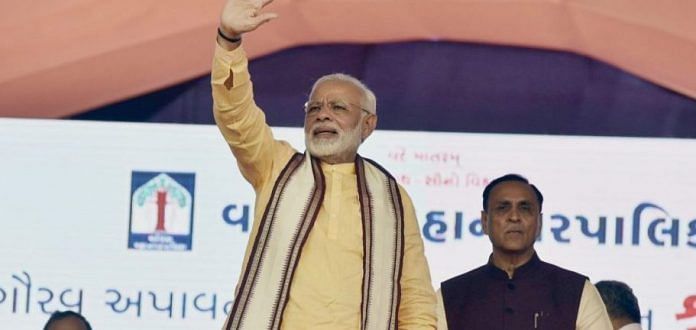The Gujarat model of economic growth and development is premised on the claims of accelerated infrastructure development of roads, highways, dams, and a spike in foreign investment. But critics have said that moderate achievements have been over-hyped, and it does not account for the decline in social indicators. The Patidar agitation of 2015 further emphasised the waning job market in Gujarat.
Is the Gujarat model of economic growth and development a myth or reality?
I have been traveling to Gujarat for decades, usually to cover communal riots. Ahmedabad was a dismal, lawless city, in which bootleggers and criminals ruled. There were areas that were too dangerous to go to after dark. Rural Gujarat in 2002 was backward, bleak, and mostly lacking in reliable supplies of electricity and water.
When I returned in 2006, I found clear signs of ‘parivartan’ and ‘vikas’. In rural Gujarat, and even in remote Adivasi districts like Dahod, there were new roads, 24-hour availability of electricity, and water for drinking and irrigation. When I enquired about this, I discovered that Narendra Modi had separated electricity lines into domestic and agricultural categories, and this enabled lights to remain on in village houses all night. For water, he had built small check dams that were very effective. And, in Dahod, I found small computer training centres for Adivasi children, and Adivasi doctors manning clean and functioning health centres.
In Ahmedabad, there were many signs of transformation that went beyond the renovated and newly salubrious banks of the Sabarmati. The roads were improved, as were the bazaars, and there was a general sense of well-being that was very different to the city I had last seen in 2002.
Here are other sharp perspectives on the Gujarat model of economic growth:
Yoginder K. Alagh: economist and former union minister
Deepender Singh Hooda: MP, Congress
Maitreesh Ghatak: professor of economics, LSE
Shekhar Gupta: chairman and editor-in-chief, ThePrint
Gaurang Jani: lecturer, dept of sociology, Gujarat University
Atul Sood: professor, JNU
Sushmita Dev: congress MP
These changes were so obvious to visiting journalists that the media started calling it the Gujarat model.
It is a model that should by now have been emulated by BJP chief ministers, who rule most of India’s biggest states. This has not happened, and the Prime Minister would do well to find out why not. The Gujarat model cannot be a model for the whole of India, but it can work at the state government level. Modi himself controls mostly Swachh Bharat, and this is working more effectively than the media reports. It is a shame he is not paying more attention to why his MPs are not doing more to improve their constituencies, and why his chief ministers have not tried to emulate the Gujarat model. I have not been back to Gujarat since Modi became Prime Minister, and so cannot comment on what has happened since then.
Tavleen Singh is an author and columnist.



